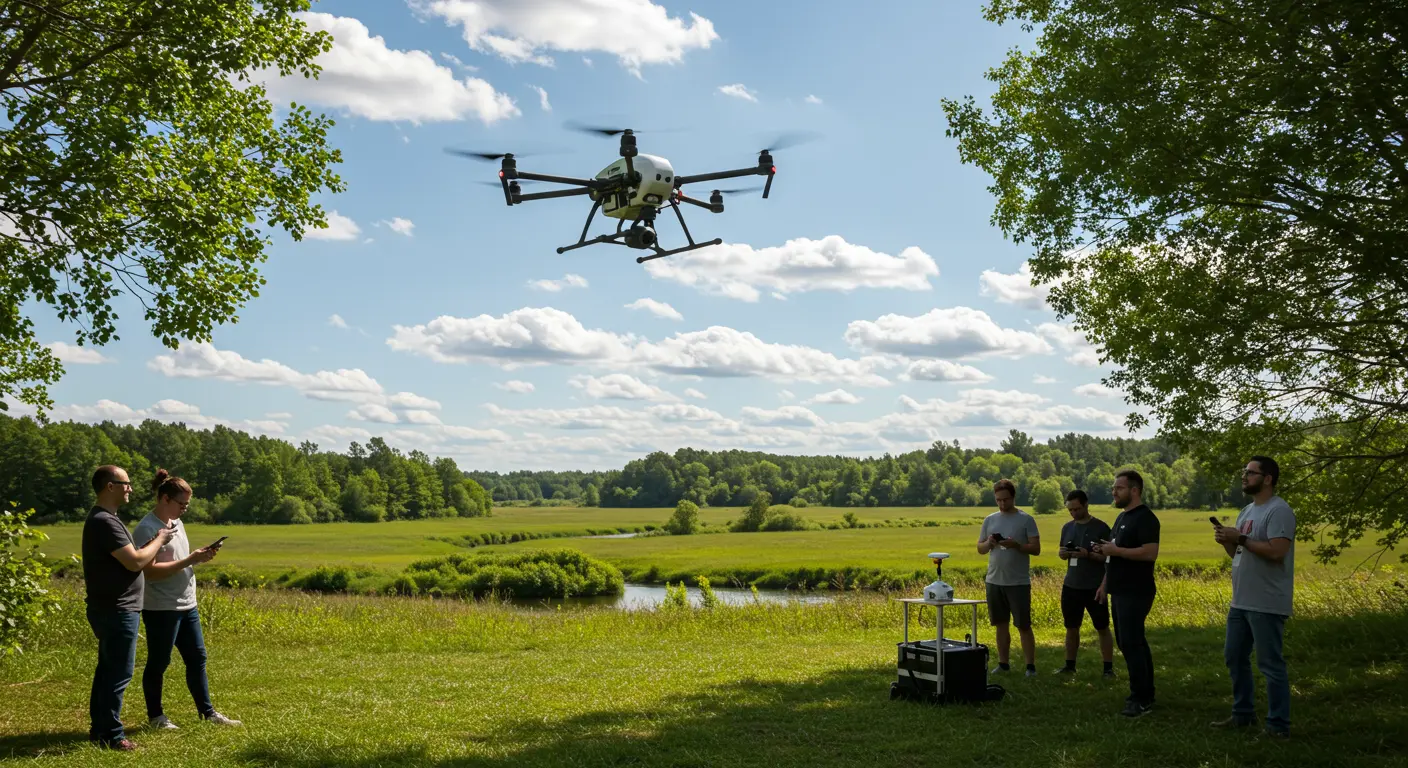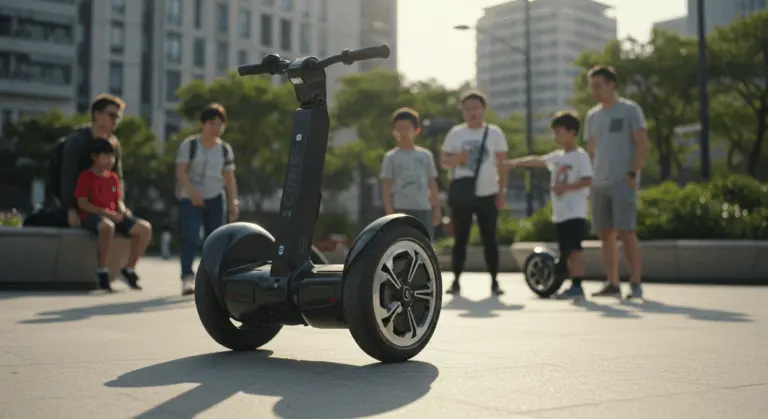How Else Can Drones Be Controlled Besides Using Radio Signals?
Understanding Alternative Drone Control Methods
While radio signals dominate drone control, a fascinating array of alternatives has emerged, significantly expanding what these aerial vehicles can accomplish. These innovative control methods address challenges in radio-challenged environments—they reshape the boundaries of autonomous flight.
Drone technology has developed control mechanisms that mirror nature’s ingenuity while using advanced computing power. From echoing the nocturnal navigation of bats to deploying sophisticated AI systems, these alternative methods transform aerial operations in numerous applications.
Four primary alternative control methods stand out:
-
Echolocation: Navigation inspired by nature for use in environments where radio signals fail.
-
Onboard Pilot: Direct human control from within the drone, eliminating signal latency and interference.
-
Internal Computer Programming: Autonomous operation using pre-programmed flight plans and sensor data.
-
Self-Motivation (AI): Advanced artificial intelligence for independent, adaptive decision-making.
Each approach offers unique advantages for industries like agriculture, delivery, and search and rescue.
These alternative control techniques are essential in radio-hostile environments, areas with limited connectivity remote locations, or scenarios demanding precise, repetitive actions with minimal human oversight. As drone technology advances, these control methods are becoming remarkably sophisticated, reliable, and accessible for commercial and recreational users alike.
Echolocation—nature’s radar system perfected by bats and dolphins—has found new life in drone technology. This approach uses sound waves and their returning echoes to map surroundings, providing an effective alternative to radio control.
Drone-based echolocation systems use ultrasonic sensors or specialized acoustic emitters that emit sound waves into the environment. These pulses bounce off nearby objects and return to the drone’s receivers.
Echolocation-based navigation works well when radio signals fail. Underground caves, dense forests, or electromagnetically chaotic environments pose minimal challenges to these acoustic systems.
Unlike radio-dependent drones dependent on external signals, echo locating drones achieve complete navigational independence. They detect and avoid obstacles in real-time without human intervention, making quick flight path adjustments when necessary.
Though still emerging in mainstream applications, echolocation systems are rapidly gaining sophistication. Some experimental models now achieve bat-like precision in labyrinthine environments.
Onboard Pilot – Human Control of Drones
Specialized drones featuring onboard pilots transform aircraft into miniature crewed vehicles. Military and industrial sectors prefer this direct control approach for missions demanding nuanced human judgment.
The control interface features joysticks, touchscreens, or other direct input devices hardwired to the drone’s flight systems. This physical connection eliminates signal interference while providing highly responsive, low-latency control—critical for high-stakes operations.
Large-scale drones accommodate onboard pilots in cockpit-like environments equipped with comprehensive instrumentation and control panels. These systems bridge human operators with mechanical components, enabling precise flight parameter management, payload operations, and mission-specific functions.
This control method excels when human judgment cannot be replaced—complex inspections, emergency responses, or operations in highly dynamic environments. Though less common than remote-controlled variants due to size and weight constraints, onboard pilot systems continue evolving.
Internal Computer Programming – Autonomous Operation
Autonomous drones operate through internal computer programming, eliminating the need for continuous human input. They execute pre-programmed flight plans using sensor data, functioning independently in wireless communication dead zones.
The heart of autonomous operation depends on sophisticated onboard algorithms and AI systems. These computational frameworks process data from GPS, cameras, LiDAR, and proximity detectors to construct comprehensive environmental understanding.
Common applications of this technology include:
-
Agriculture: Drones systematically survey fields to monitor crop health and soil conditions.
-
Logistics: Autonomous drones follow predetermined routes for deliveries, using onboard systems to avoid obstacles.
-
Search and Rescue: Drones methodically scan large areas with optimized search patterns, operating effectively even when communication is lost.
Autonomous drone programming sophistication continues to advance. Modern systems incorporate machine learning capabilities, allowing drones to enhance performance by analyzing past flights and outcomes.
Self-Motivation – AI-Driven Drone Control
Self-motivation is the most advanced form of drone control, where artificial intelligence empowers drones to make independent decisions without constant human guidance. Unlike pre-programmed autonomous systems, self-motivated drones use advanced AI algorithms to evaluate situations, adapt to changing conditions, and determine optimal actions based on mission objectives and environmental inputs.
Neural networks and decision-making frameworks form the core of self-motivated drone systems, processing multi-sensor data to develop comprehensive situational understanding. These AI systems weigh complex factors—battery life, weather conditions, mission priorities, unexpected obstacles—to make sophisticated decisions typically requiring human judgment.
Practical applications for AI-driven drones are expanding across industries:
-
Environmental Monitoring: Drones autonomously track wildlife by adapting their search patterns to animal behavior.
-
Disaster Response: AI systems assess damage, identify survivors, and prioritize inspection areas without constant operator input.
-
Agriculture: Drones with self-motivation can detect crop disease and automatically adjust protocols to gather more detailed data.
What truly distinguishes self-motivated drones from other autonomous systems is their capacity for learning and continuous improvement. These drones analyze decision outcomes, identify successful operation patterns, and refine their algorithms accordingly.
Countermeasures and Their Role in Drone Control
As drone technology advances and becomes more widespread, effective countermeasures are essential. Drone countermeasures represent specialized control focused on managing unauthorized or potentially harmful operations.
Countermeasures generally fall into three main categories: physical destruction, neutralization, and hijacking control.
Neutralization techniques offer less destructive alternatives by disrupting drone functionality. Signal jamming devices cut communication between drones and operators, forcing many commercial models to hover, land safely, or return home.
Advanced countermeasures involve hijacking drone control through sophisticated electronic warfare. This requires intercepting control signals and transmitting counterfeit commands, enabling security personnel to safely land or redirect aircraft.
Types of Countermeasures for Drones
Modern countermeasures employ several jamming techniques:
-
Spot Jamming: Focuses on specific frequencies, requiring precise intelligence on the target drone.
-
Barrage Jamming: Broadcasts interference across a wide spectrum of frequencies to counter multiple drones.
-
GPS Jamming: Targets a drone’s navigation system, causing it to drift or enact failsafe procedures.
These jamming technologies can cover extensive areas, making them especially useful for protecting critical infrastructure, public events, or sensitive facilities from drone intrusions. However, effectiveness varies dramatically based on target drone sophistication.
Advanced drones are difficult to jam for jamming technologies. Military-grade and sophisticated commercial models often incorporate anti-jamming features like frequency hopping—rapidly switching between communication channels to evade interference.
The ongoing competition between drone manufacturers and countermeasure developers has led to increasingly sophisticated systems on both fronts. The most effective security approaches now combine multiple countermeasure technologies, creating layered defense systems adaptable to various drone threats and capabilities.
The Future of Drone Control Technologies
Drone control landscapes are rapidly evolving beyond traditional radio methods. Several emerging technologies will change how drones are deployed and controlled.
Hybrid control systems represent one of the most promising developments, combining multiple control methods to create reliable drone operations. These systems might blend autonomous programming with human oversight capabilities, allowing seamless switching between control modes based on mission requirements or environmental conditions.
Swarm intelligence technology represents another rapidly advancing frontier, enabling direct drone-to-drone communication rather than relying on central control. This peer-to-peer communication facilitates coordinated movement and task distribution without constant human input or vulnerable radio links.
Neural interfaces offer a significant advancement, with early research showing promising results in direct brain-to-drone control. These systems interpret neural signals from human operators and translate them into flight commands, potentially offering unprecedented intuitive control without physical controllers or extensive training.
Quantum communication shows promise for secure drone control. Unlike conventional radio signals vulnerable to jamming or interception, quantum-based communication uses quantum mechanics principles to create theoretically unhackable operator-drone connections.
As these technologies mature, we’ll likely witness drones operating effectively in previously impossible environments—from GPS-challenged dense urban areas to areas with poor communication remote wilderness locations. The future of drone control doesn’t lie in any single technology but in intelligent integration of multiple systems.







